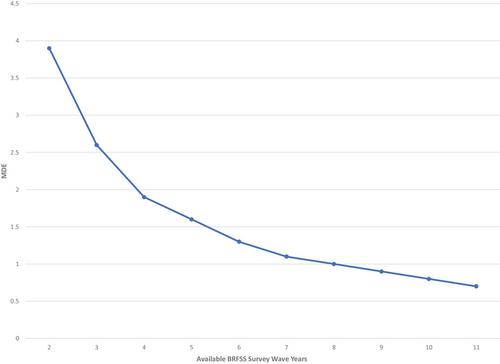Cigarette smoking is the leading cause of preventable death in the United States. Although smoking rates have been declining, it is unclear how the COVID-19 pandemic impacted smoking behaviors.
With population-based data from the Behavioral Risk Factor Surveillance System (2010–2023), we will analyze four outcomes: (1) currently smoking, (2) started smoking in the past year, (3) number of cigarettes per day, and (4) quit smoking in the past year. By estimating a two-way fixed effect regression model to account for state-level factors and temporal trends, this study identifies the effect of exposure to the COVID-19 pandemic by comparing the change over time in an unexposed group (interviewed January 1–March 20, 2020) to the change over time in the exposed group (interviewed January 1–March 31, 2021–2023). This stage 1-registered report conducts a Power and pilot analysis with an exploratory outcome: being uninsured.
Our power analysis calculates a minimum detectable effect size = 0.7%. The pilot analysis indicates that exposure to the COVID-19 pandemic was associated with a statistically significant decline in the probability of being uninsured (Est. = −2.2%; CI = −3.5, −1.1). There is little evidence that the early and late survey wave cohorts differed before the pandemic.
This registered report outlines a study aimed at investigating the direct impact of the COVID-19 pandemic on smoking behaviors related to prevalence, initiation, intensity, and cessation. The findings will provide valuable insights into the effects of public health crises on health-related behaviors and inform future public health interventions. The preregistration of the study design and analysis plan ensures transparency, trust, and replicability of the results. Quantifying whether and how smoking behaviors changed, and in whom, can inform ongoing tobacco control efforts to continue the downward trend in cigarette smoking.
https://osf.io/vq8m4


